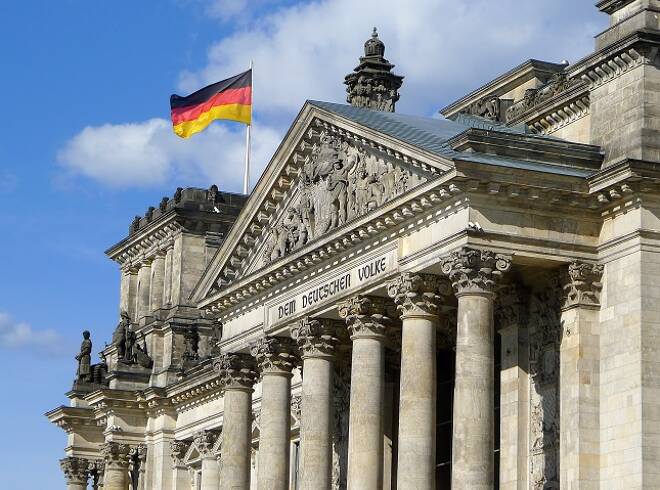Advertisement
Advertisement
War in Ukraine Weighs Down on Germany’s Growth Prospects in 2022
By:
Germany’s growth outlook is weakening as fallout from the Russia-Ukraine conflict magnifies existing supply-chain disruptions and inflationary pressures, increasing urgency of implementation of the government reform agenda.
We have revised down our growth forecast for Germany for this year but are still expecting solid growth of 3.5%, compared with a previous estimate of 4.4%, amid rapid escalation of political tensions and sanctions following Russia’s further invasion of the Ukraine. This compares with somewhat stronger 2022 growth expectations for other major European economies such as France (4.2%) and the UK (4.6%).
Continued economic recovery in 2022: GDP growth forecast
Russia is Germany’s 13th largest trading partner
Russia is Germany’s 13th largest trading partner with a trading volume of around EUR 60bn, but this accounts for only 2.3% of Germany’s aggregate trade. The direct impact on trade resulting from the severe economic sanctions imposed on Russia since escalation of this war in Ukraine is therefore manageable at an aggregate level.
However, Germany’s export-oriented economy and reliance of exporters on international suppliers implies that the war in Ukraine will result in further disruption particularly for the all-important German automotive sector given reliance on vehicle component manufacturers including those from Ukraine and Russia.
Countersanctions from Russia also increase transport costs to Germany’s trading partners
Countersanctions from Russia, such as closing down the Russian airspace, will also increase transport costs to China, Germany’s largest trading partner. While such disruption is manageable, it is likely to erode profitability across a broader range of industry sectors. Data from the Bank for International Settlements show that German banks’ aggregate exposures to Russia fell significantly over the recent years and stood at USD 7.4bn at the end of 2021 (less than 0.5% of total claims).
In the near term, other downside risks to German growth prospects remain outstanding. Many of such risks are external such as new Covid-19 waves, a further escalation of geopolitical risks or a significant slowdown of economic growth in China. Particularly any shock that results in further global supply chain disruptions could derail Germany’s economic recovery and put our revised growth estimate for 2022 under further downside risk.
The war in Ukraine as well magnifies inflationary pressure
The war in Ukraine and sanctions on Russia are also magnifying domestic pressures, notably inflation. German households already face the highest electricity prices in the EU and, in line with developments in most other European economies, prices are continuing to increase. The risk of further escalation of this conflict and more severe sanctions in the energy sector remain substantive.
Energy inflation rises across the EU: electricity prices incl./excl. taxes; energy inflation rate
To help address rising energy costs, Germany released part of its national oil reserves in coordination with the International Energy Agency. Since more than half of the electricity price faced by German households is due to taxes, there is some scope to as well cushion the impact of higher energy costs vis-à-vis broad-based tax relief. However, inflationary pressures are likely to remain high. Besides disruptions to global energy exports, Russia and the Ukraine are among the five largest wheat exporters of the world, adding to price pressure in energy, food and other commodities over the medium run as such supplies are momentarily interrupted.
Supply-chain problems are likely to prove temporary
More encouragingly, at least some of German manufacturers’ supply-chain problems are likely to prove temporary. If so, with order books across manufacturing sectors full, the German economy’s recovery might be slower than expected this year but continue robustly next year when we expect growth of circa 2.7%, above a pre-pandemic trend rate.
Sustaining such growth depends critically on the reform agenda and investment priorities identified by the new coalition government, which need to be implemented. These priorities include targeted infrastructure spending, supporting a transition towards the low carbon economy and reducing bureaucracy.
For a look at all of today’s economic events, check out our economic calendar.
Eiko Sievert is a Director in Sovereign and Public Sector ratings at Scope Ratings GmbH.
About the Author
Eiko Sievertcontributor
Eiko Sievert is an Executive Director in Scope’s Sovereign & Public Sector ratings group, responsible for ratings and research on a number of public-sector borrowers.
Advertisement
